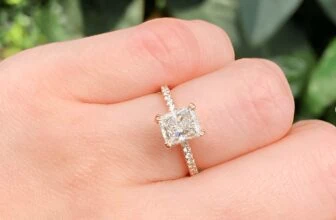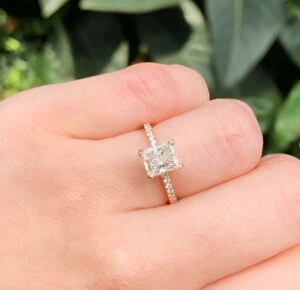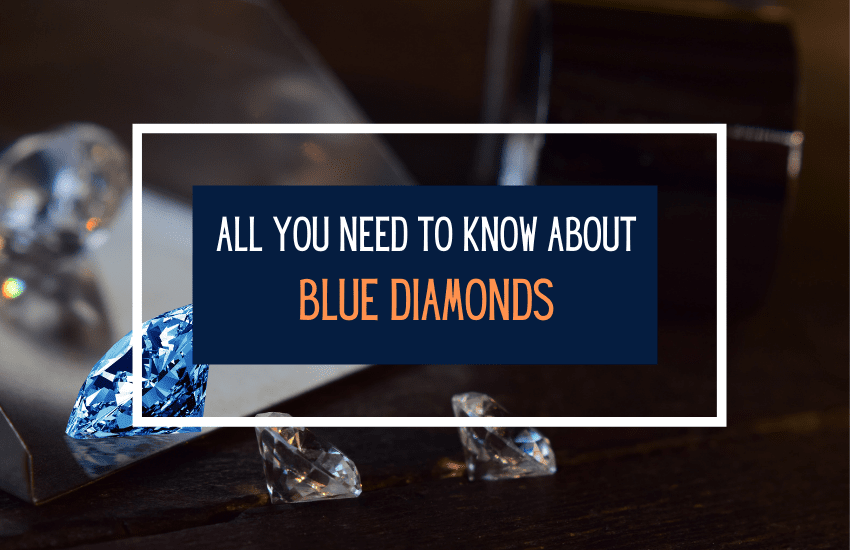
Table of Contents
Some of the most famous diamonds in history are blue diamonds. Blue diamonds are prestigious and luxurious, and beyond the reach of most of our budgets. They’re among the rarest and most valuable of all diamond varieties.
If you’re lucky enough to afford one, a blue diamond makes for a classy, elegant, and distinct engagement ring that’ll stand out on your finger. However, synthetic or treated blue diamonds are excellent alternatives to get the look without breaking the bank.
In this comprehensive buying guide to blue diamonds, let’s take a look at all the main factors to be aware of before you make the purchase of a lifetime.
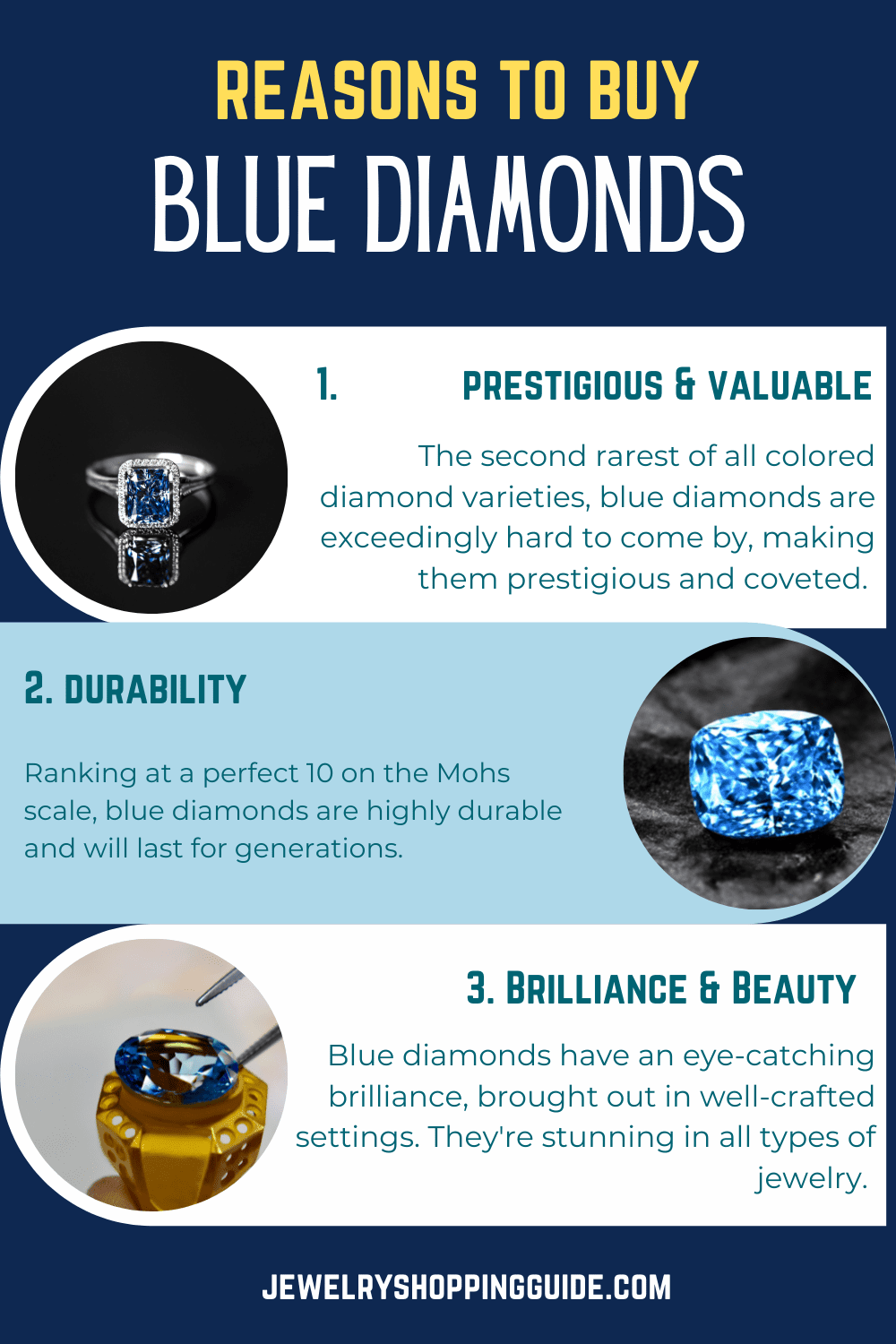
Why are Blue Diamonds Blue?
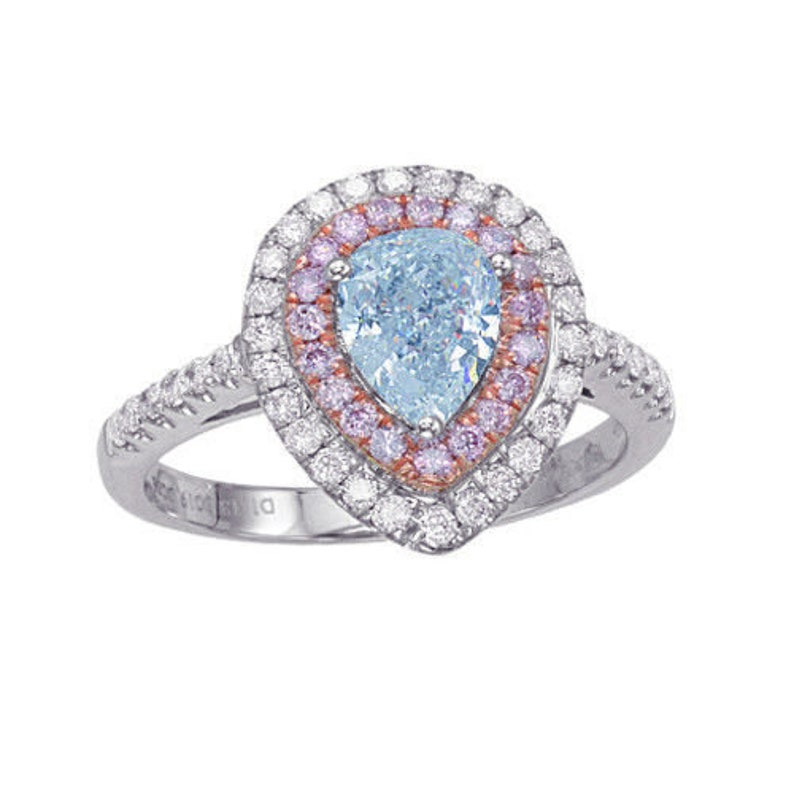
Diamonds are the result of pressurized and heated carbon atoms, but if there are foreign elements present, this can change hue of the stone.
Boron is a rare element, making up only about .001% of the earth’s crust. If the nitrogen content is low and there is boron present during the diamond’s formation, the stone can become blue. A higher concentration of boron will result in a more intense bluish hue.
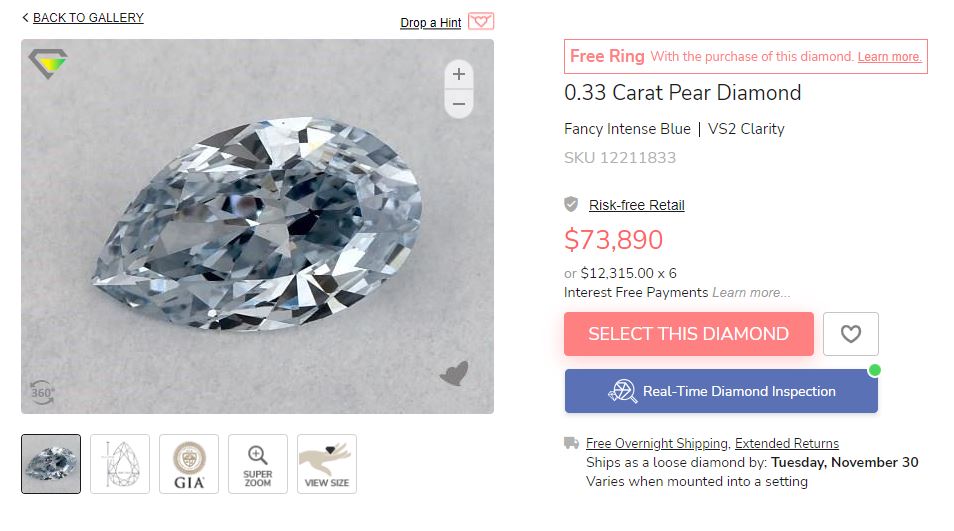
Some blue diamonds can appear green or grey. Greenish blue diamonds can get their color from radiation and nitrogen impurities, while grey diamonds get their color from hydrogen.
Naturally occurring pure blue diamonds are extremely rare to find. Most blue diamonds on the market have secondary hues in addition to the primary bluish hue.
Why are Blue Diamonds a Good Choice for Engagement Rings?
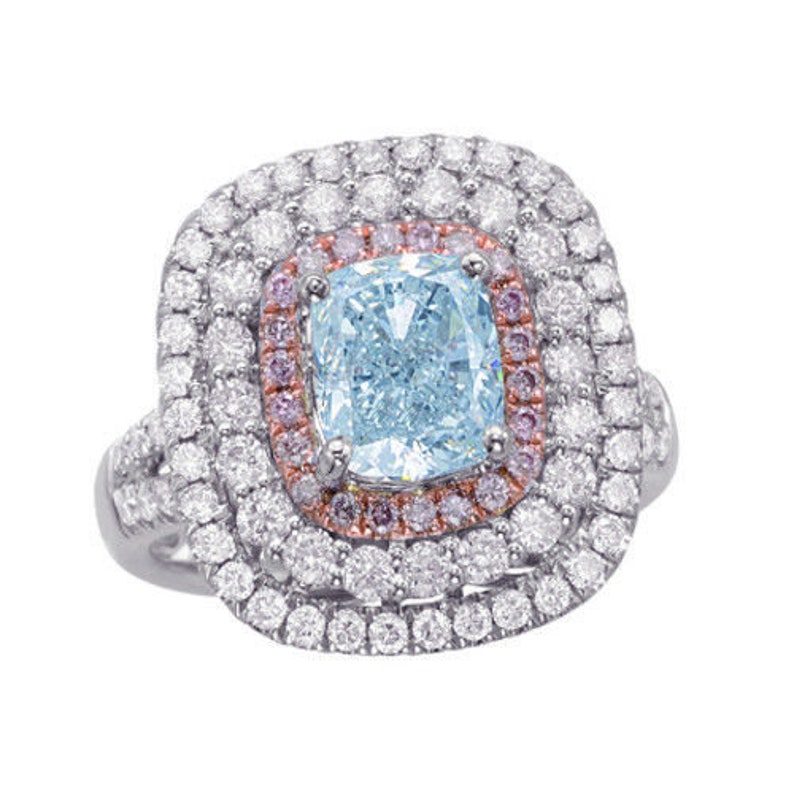
On a practical note, blue diamonds are extremely durable and scratch-resistant, and are perfect for daily wear. The fire and sparkle of a blue diamond are unmatched by other blue gemstones, like blue sapphire or tanzanite, making them ideal for a center stone. They pair beautifully with colorless diamonds, like this unique blue diamond halo ring. Blue diamonds also look stunning in more elaborate designs, like this triple octagonal halo ring.
From a symbolic standpoint, blue diamonds represent faithfulness, sincerity, and loyalty – ideal characteristics for a relationship about to take a new direction.
Another thing to consider is and prestige of a blue diamond engagement ring. Blue diamonds stand out, with their value and rarity. Very few engagement rings contain blue diamonds, whether natural or synthetic, making them a great choice if you want a unique style.
How Do You Grade the Color of a Blue Diamond?
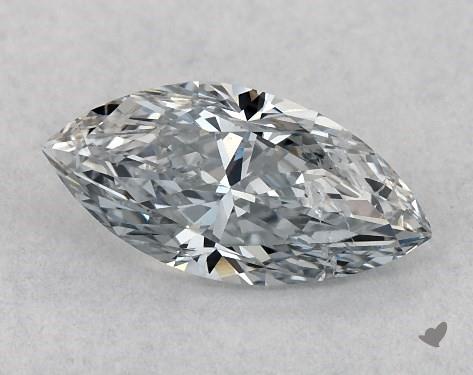
Of the 4Cs used to grade diamonds, cut is king for colorless diamonds. But for colored diamonds, color is the most important quality factor.
It can be difficult to evaluate the color of a blue diamond, as often there are more than one color present. In order to identify the exact color grade, the three main aspects to take note of are hue, tone, and saturation.
Hue: This refers to the primary color or visible tint of the stone. In the case of blue diamonds, blue would be the hue of the stone. Grey and green are the most common secondary hues present in blue diamonds. If these tones overpower the blue, the overall value of the stone can be affected. Pure colored diamonds are unique and very expensive.
Tone: This refers to how light or dark the stone is. If the stone is too light, it will appear faint, and the color will not be vivid. If, on the other hand, the stone is too dark, it may come across as being more black than blue. Choosing the tone comes down to personal preference, but the best stones have a tone that is neither too dark nor too light.
Saturation: This refers to how strong the color of the stone is. The deeper and more vivid the blue color is, the higher the price of the stone.
Once these three aspects have been evaluated and graded, a specific color grade on the color scale for fancy-colored diamonds can be assigned to the stone.
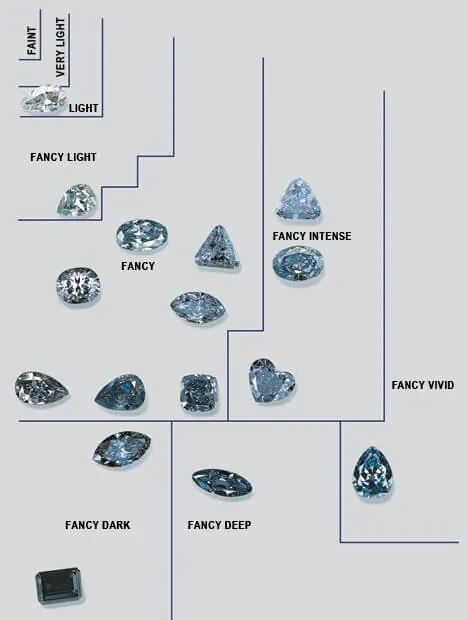
The color grade scale is as follows: Faint, Very Light, Light, Fancy Light, Fancy, Fancy Intense, Fancy Vivid, Fancy Dark, and Fancy Deep.
Cut Grading of Blue Diamond
For blue diamonds, the importance of the cut lies in relation to its color. These stones are faceted to enhance the color of the stone. They’re typically cut into fancy shapes, including marquise, pear, oval, radiant, cushion, and emerald.
An expert cutter will choose the right cut to minimize the wastage of the diamond rough and maximize the beauty of its color.
Evaluating the Clarity of Your Blue Diamond
As with cut, clarity for a blue diamond is also not as important as it is for a white diamond. The reason is that blue diamonds are able to hide flaws to some degree due to their color.
When purchasing a blue diamond, you may be able to drop down a few grades on the clarity scale and still have an eye-clean stone. You can evaluate the clarity by checking whether or not the stone has visible flaws.
Even blue diamonds with low clarity, like this SI2 stone, can command high prices.
Blue Diamond vs. Blue Sapphire – Is There a Difference?
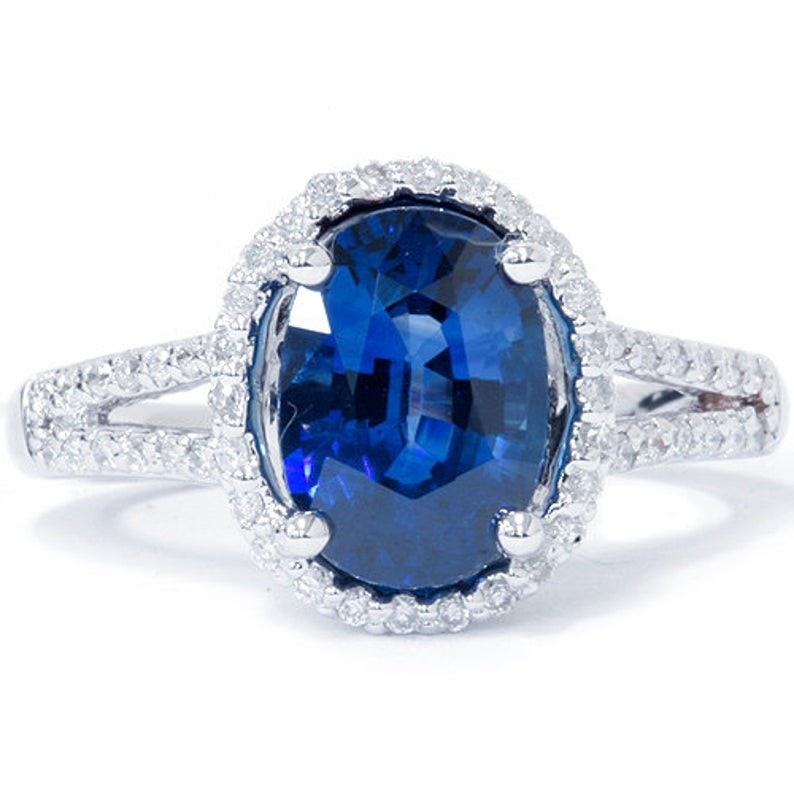
Although many people compare blue diamonds to sapphires and believe they are in many ways the same, these two types of stones are different. Here are the main differences:
- Durability
Blue diamonds rank 10 on the Moh’s scale while sapphires have a hardness ranking of 9. Although the difference in hardness is only by one grade, there are implications for this. Firstly, sapphires may need cleaning or polishing more often than blue diamonds. Second, blue diamonds are more durable than sapphires and are more scratch-resistant.
- Rarity
Blue diamonds are much rarer than sapphires, and finding a blue diamond engagement ring is difficult and expensive. Sapphire, on the other hand, is relatively plentiful.
- Brilliance
Blue diamonds are more brilliant and have greater sparkle than sapphires due to their superior ability to refract light. Although sapphires have a very good sparkle, they are not as bright as blue diamonds, and when dirty, their sparkle can be easily dulled.
- Chemical Composition
Blue diamonds are made of carbon with traces of boron, nitrogen, or hydrogen whereas sapphires are formed from corundum (aluminum oxide).
Whether you choose a sapphire or a blue diamond is totally dependent on your personal preference and most importantly budget. While both stones are excellent choices for engagement rings, blue diamonds are definitely more brilliant and have that extra sparkle.
Should I Buy a Treated Blue Diamond?
Because natural blue diamonds are very hard to find, it can be difficult to find one to suit your specifications and budget. Treated blue diamonds are an excellent alternative to natural blue diamonds.
It is important to note that these enhanced diamonds are not fake. In fact, many blue diamonds on the market are treated as colorless diamonds. These are enhanced using irradiation, heat, and pressure to produce the blue color in the stone. Often the stones treated in this way have a very saturated appearance.
When buying a treated stone, ensure that you are given a grading report from a reputable lab such as GIA or IGS. Treated diamonds are not as expensive as natural blue diamonds.
What is Synthetic (Lab-Created) Blue Diamond?
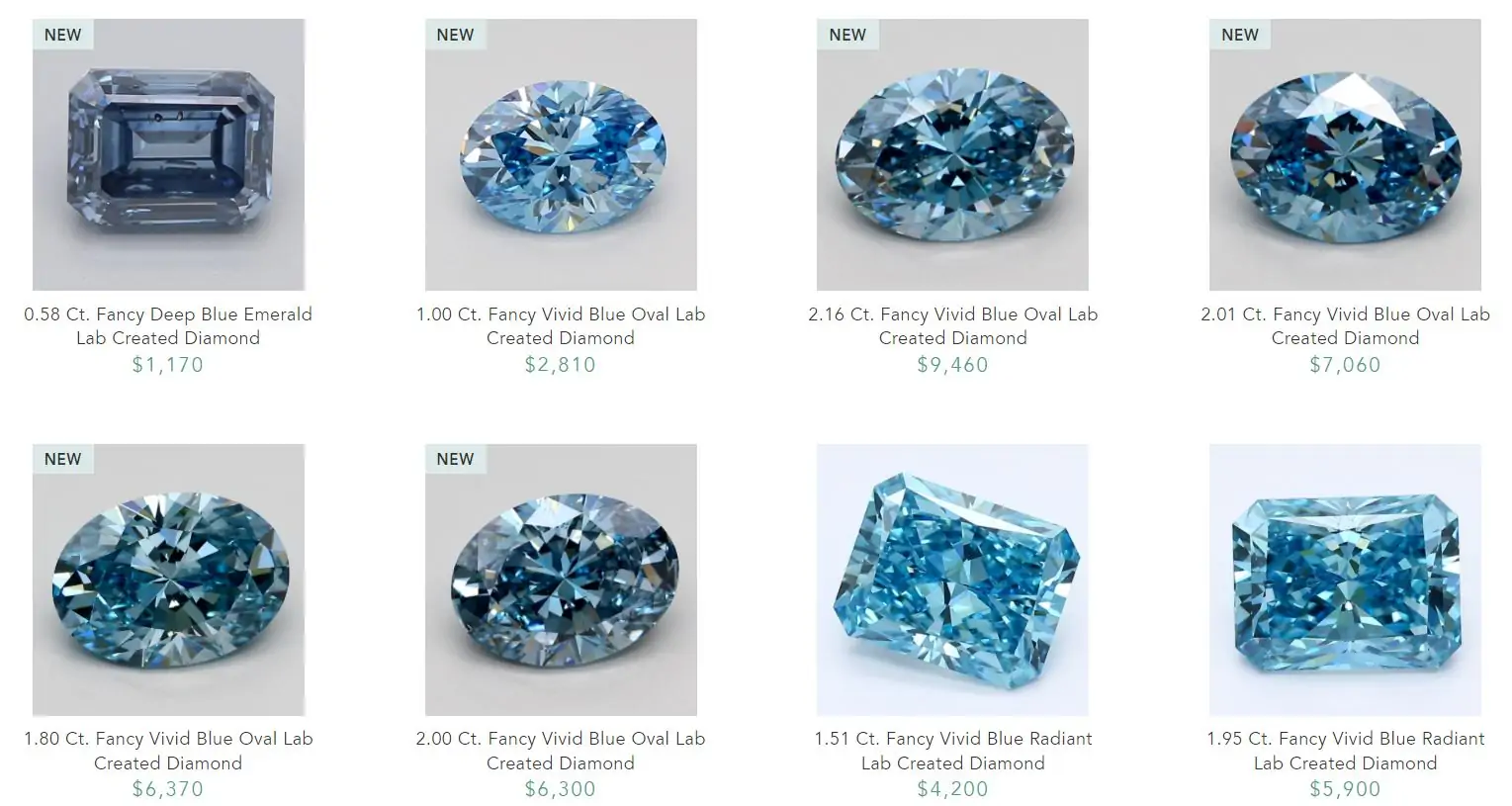
An excellent alternative to natural blue diamonds is synthetic blue diamonds. These are stones that have the exact same chemical composition as a naturally occurring diamond with the only distinguishing feature being that they were created in a lab.
These stones come with many benefits. They can be 20% to 50% less expensive than natural blue diamonds. They also have a much lower direct impact on the environment, making them an eco-friendly choice. They are conflict-free and you can be assured that the diamond is ethically sourced.
Lab diamonds are graded in the same way as mined diamonds. Look for a report from an independent grading lab such as GIA or IGI. They will contain information of the 4Cs as well as details of its origin.
If you are looking for a large stone, a treated blue diamond may give you more options to choose from, as it can be difficult to find synthetic blue diamonds over 2 carats.
Where to Find Blue Diamonds
Finding a blue diamond is hard because of how rare they are. Retailers like James Allen and Blue Nile often have a small collection of blue diamonds on offer.
You can also find several vendors offering high-end quality blue diamond jewelry on Etsy, like this retailer, who offers.
For lab-created blue diamonds, we recommend searching on Brilliant Earth, as they have a fine collection of reasonably priced high-quality synthetic stones on offer.
Finally, always exercise caution when shopping for a blue diamond. As they are so rare and valuable, ensure that you are buying from a reputed vendor and that you have been provided with a grading report from a third party such as GIA.
Whether you choose a natural, synthetic, or enhanced blue diamond, make sure you know the origin of the stone.
What Are Some Famous Blue Diamonds?
Blue diamonds make up some of the world’s most captivating diamond stories. These stones are the stuff of legends and mystery.
1- Hope Diamond
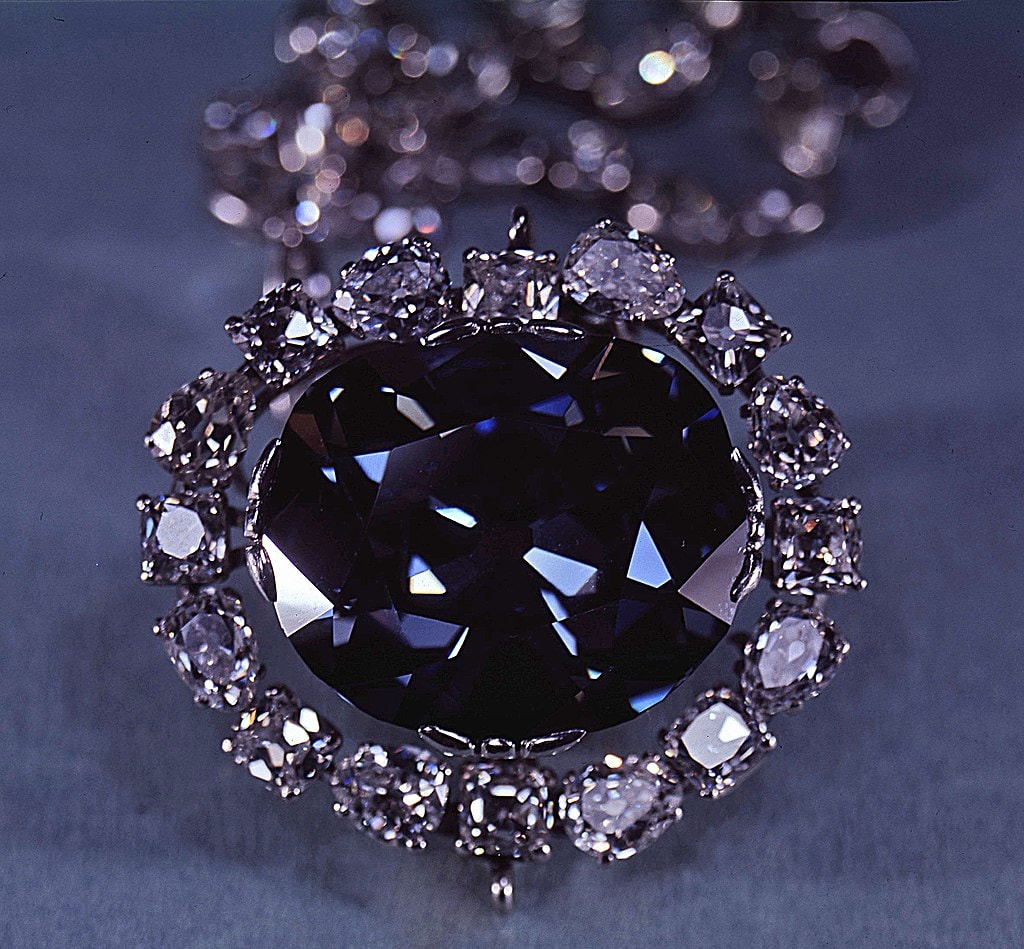
The most famous blue diamond, the Hope Diamond resides in the Smithsonian. It’s known for being ‘cursed’ but it’s said that this is just a superstition.
2- Blue Moon
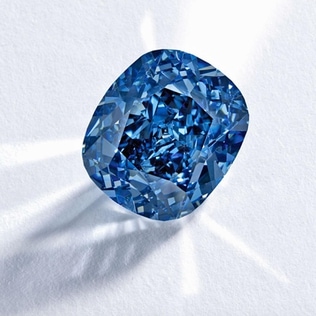
The most expensive blue diamond sold at auction, the Blue Moon was sold for $48.4 million. It was renamed Blue Moon of Josephine by its new owner, billionaire Joseph Lau Luen-hung, who named it after his seven-year-old daughter.
3- The Winston Blue
One of the largest blue diamonds in the world, at 13.22 carats, the Winston Blue was bought at auction by Harry Winston for $23.8 million.
4- The Wittelsbach-Graff
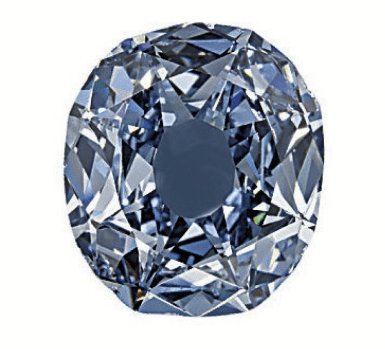
Originally mounted on the crown of the King of Bavaria, the stone was purchased by Graff for $23.4 million in 2018. It was later recut, losing about 4.5 carats in the process but resulting in a diamond with better sparkle and fire. Today the stone is worth much more than what it was purchased for, as it’s believed to be around $80 million.
FAQs About Blue Diamonds
Is a blue diamond a real diamond?
Blue diamonds are genuine diamonds with boron in their composition. They have all the same characteristics as colorless diamonds.
What is the rarest diamond color?
Red is the rarest fancy colored diamond, followed by blue diamonds.
Where are blue diamonds found?
Most blue diamonds today come from the Cullinan mine in South Africa and the famous Argyle mine in Australia.
What do blue diamonds symbolize?
Blue diamonds represent loyalty, integrity, faith, trust, strength, and tranquility.
What is the most famous blue diamond?
The most famous blue diamond is often thought to be the Hope Diamond, which has been valued at $250 million and is known for its famous ‘curse’.
What is the largest blue diamond ever found?
The largest blue diamond is Oppenheimer Blue at 14.62 carats. It sold for $57.5 million at auction.
Wrapping Up
Blue diamonds are among the most prestigious gemstones in the world, coveted by many and only owned by a few. These stones are ideal in any type of jewelry and are heirlooms to be passed down through generations. While natural blue diamonds are very hard to come by, science has made it possible to own these beautiful stones at affordable prices.


